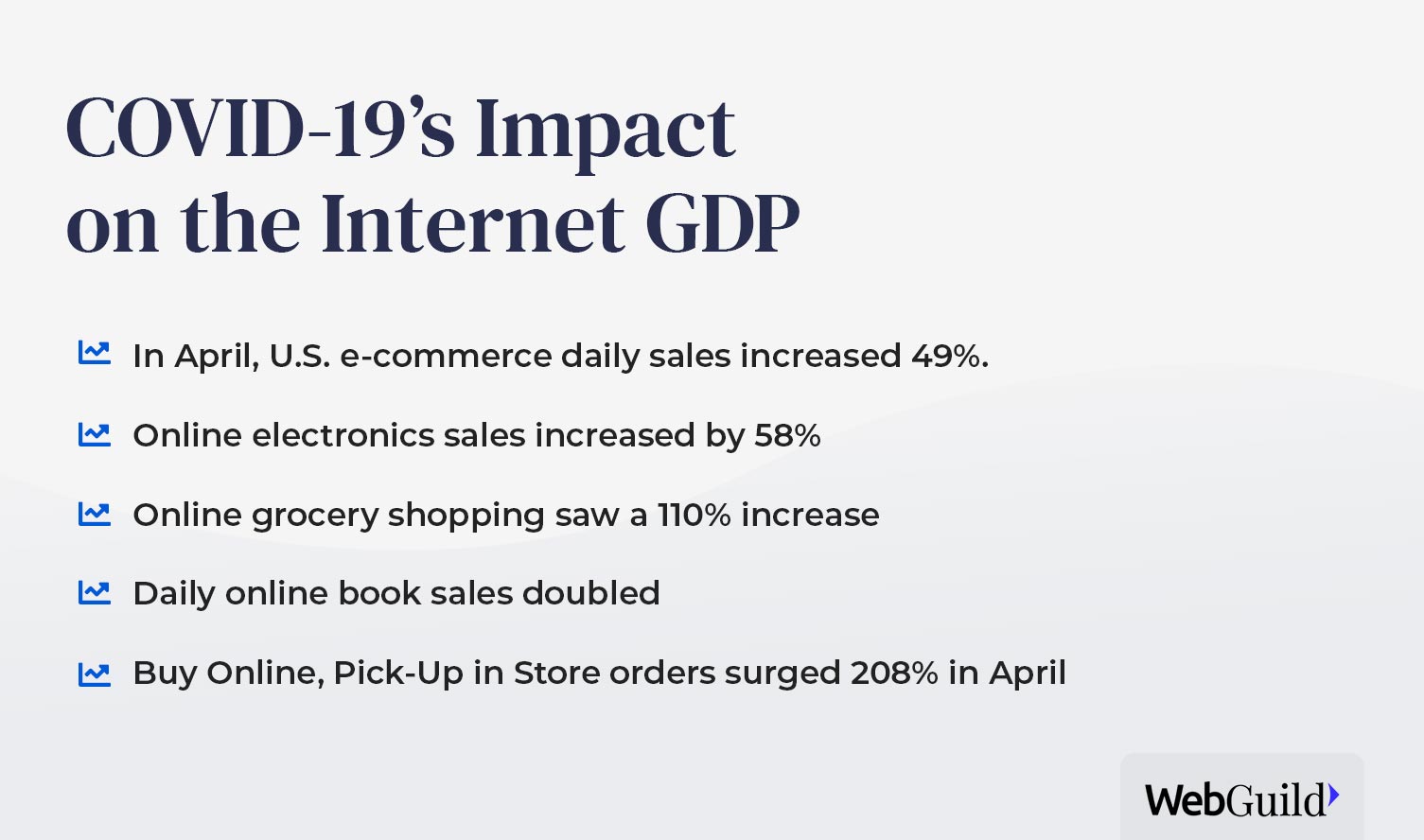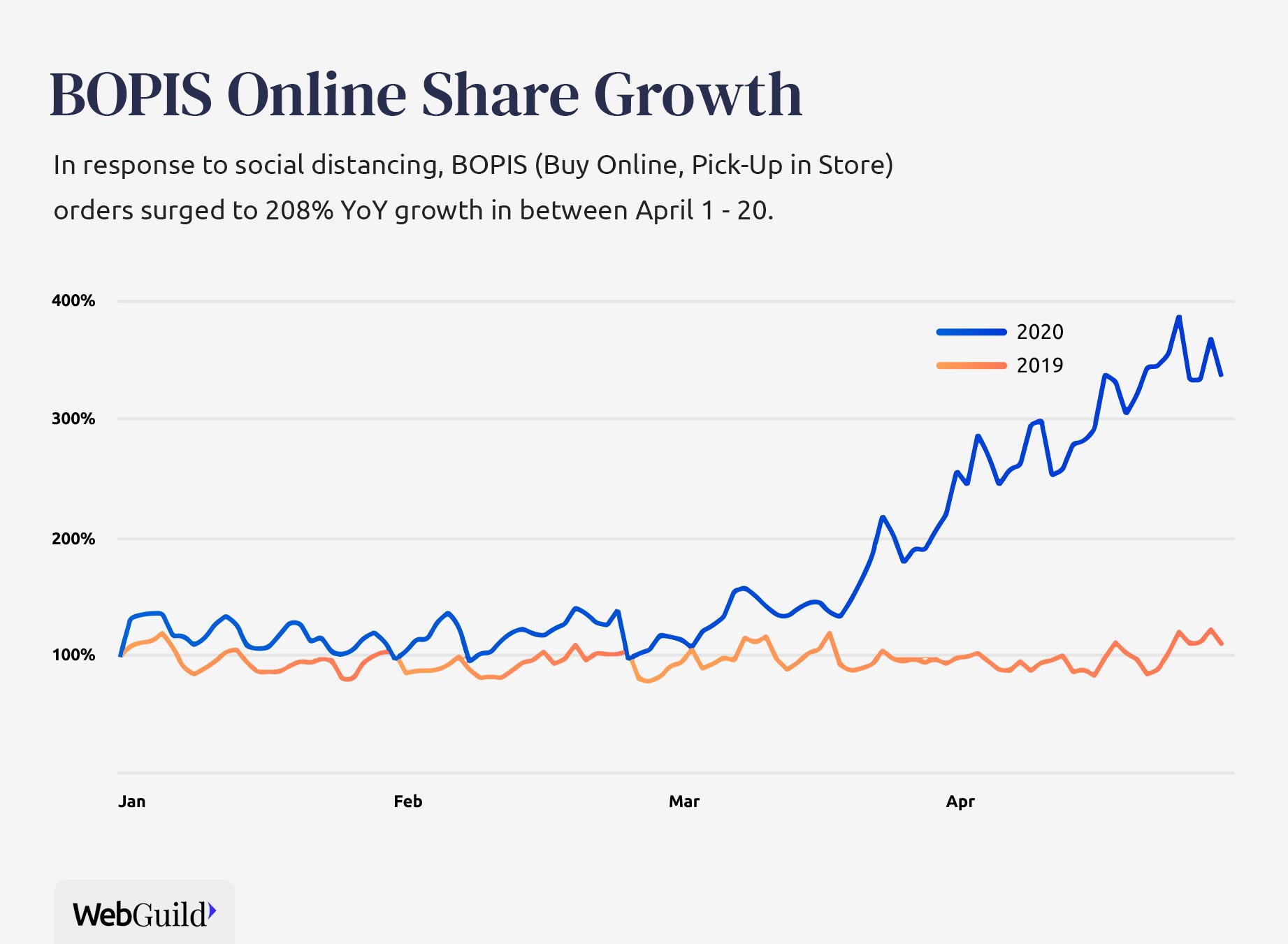Since the COVID-19 pandemic started, the online economy has changed dramatically. While the economic impact of COVID-19 has alarmed analysts, who have predicted that the global GDP will fall by 2.4% this year, economic growth is expected to rebound in 2021.
The impacts of COVID-19 would have been far greater without the well-established digital economy, which is seeing increased growth during the pandemic. According to Adobe, the DEI has increased 28% since 2014. While it’s too soon to tell how COVID-19 will impact DEI since the pandemic started a few months ago, it is notable that the DEI continued to rise despite the fact that the overall global GDP has fallen.
The internet has played a significant role in helping people comply with social distancing and shelter-at-home orders imposed worldwide in the past few months. Internet connectivity – including both the web and smartphones — has also helped keep businesses operational and profitable, facilitating online meetings, serving as a portal to order essential items such as groceries and clothing, and serving as a source of entertainment when all movie theaters, concert venues, and other large high-traffic venues must be closed.
- According to research from the Pew Research Center, 93% of Americans are so reliant on the internet in the novel coronavirus pandemic that an outage to either internet or cellphone service would be problematic.
- An additional 25% of adults are relying on internet for work communications then did before the coronavirus outbreak began.
- An additional 16% of adults surveyed said they are using the internet to communicate with their medical professional.
COVID-19’s Impact on the Internet GDP
Adobe’s Digital Economy Index (DEI) is a global economic measure that measures the buying power of digital consumers. Looking at the Adobe DEI, certain trends and patterns emerge to show the novel coronavirus’ contribution to the internet GDP.
Online Shopping Patterns
Consumers, eager to obtain items faster than the long timeframe imposed by online shopping, have opted for buy-online, pick up in store (BOPIS) where available. BOPIS orders increased 208% in year-over-year growth in the month of April alone. This surge in BOPIS came as consumers sought to balance their shopping needs with social distancing measures and the need to avoid high-traffic retail establishments at which they would normally shop.
In fact, according to Adobe, the digital economy has been growing faster than the economy as a whole. This was true even before people around the world started changing their day-to-day behaviors to reduce the spread of COVID-19.
- Reuters reports that in 2018, the internet sector was worth $2.1 trillion of the American economy – about 10% of the U.S. GDP – and the fourth largest sector of the economy.
- Online purchase power of the online U.S. dollar has increased 28% since 2014, according to Adobe.
In the current pandemic, consumers rely heavily on online shopping, and most transactions that were previously done at a brick-and-mortar store are now being handled online. Likewise, shoppers’ needs have also changed, opting for items which can support working, socializing, and exercising at home. Companies have had to adapt to these changes in consumer supply and demand, as well as changes in the ability for companies to implement social distancing to continue operations and keep up with this demand.
Telework Options Have Defined the COVID-19 Pandemic
Another aspect of the digital landscape that is changing is the use of remote and telework options, including online meeting applications such as Zoom. According to Market Watch, Zoom’s user base has more than quadrupled during the ongoing pandemic. Businesses and schools are taking advantage of teleconference tools such as Zoom, which may persist well after the pandemic.
Conclusion
While the future remains unknown, it remains clear that, until a vaccine or therapeutic is developed, communities will continue to enforce social distancing and other measures to prevent the spread of COVID-19. These measures will certainly continue to impact the economy and help promote growth of the digital economy. Online business will continue to thrive, and more and more organizations will want to take advantage of the power of the internet to continue to survive in the new normal of life amidst the COVID-19 pandemic.
Fair Use Statement
You may use and share the images and information on this page freely for non-commercial uses so long as you provide a link back to the URL of this page to give proper credit.
References
Adobe. (2020). “Adobe Digital Economy Index.” URL: https://www.adobe.com/experience-cloud/digital-insights/digital-economy-index.html
Anderson M and Vogels EA. (2020). “Americans turn to technology during COVID-19 outbreak, say an outage would be a problem.” Pew Research Foundation. URL: https://www.pewresearch.org/fact-tank/2020/03/31/americans-turn-to-technology-during-covid-19-outbreak-say-an-outage-would-be-a-problem/
Bary, E. (2020). “Zoom, Microsoft Teams usage are rocketing during coronavirus pandemic, new data show.” URL: https://www.marketwatch.com/story/zoom-microsoft-cloud-usage-are-rocketing-during-coronavirus-pandemic-new-data-show-2020-03-30
S&P Global Ratings. (2020). “Economic Research: COVID-19 Deals A Larger, Longer Hit To Global GDP.” URL: https://www.spglobal.com/ratings/en/research/articles/200416-economic-research-covid-19-deals-a-larger-longer-hit-to-global-gdp-11440500
Shepardson, D. (2019). “Internet sector contributes $2.1 trillion to U.S. economy: industry group.” Reuters. URL: https://www.reuters.com/article/us-usa-internet-economy/internet-sector-contributes-2-1-trillion-to-u-s-economy-industry-group-idUSKBN1WB2QB



